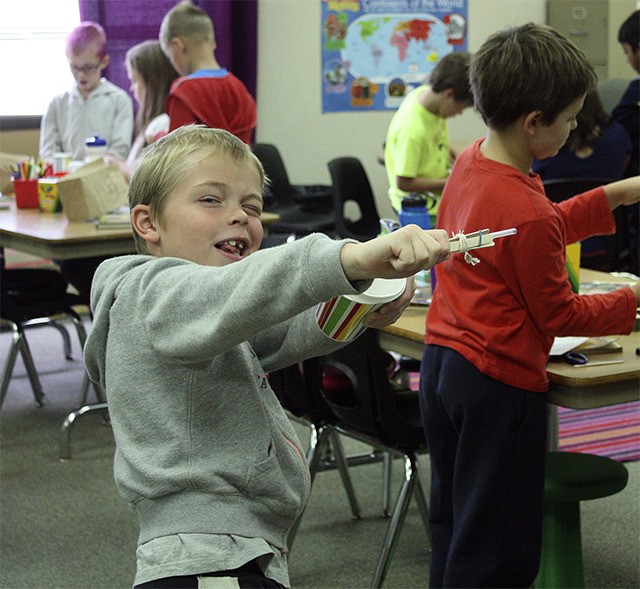Spurred by new state legislation, the Snoqualmie Valley School District this year launched its new science, technology, reading, engineering, arts, and math (STREAM) program for gifted children.
This “magnet” program serves the top elementary age students in the school district within their own classrooms at Snoqualmie Elementary School.
Washington Administrative Code (WAC) 392-170-078 requires all school districts to provide services for highly capable students.
Kids get selected to the program by scoring in the 96th or above percentile on tests such as the Cognitive Abilities Test, a test that measures reasoning and problem-solving, and the Iowa Tests of Basic Skills, which tests the development of students’ skills and critical thinking.
Daniel Schlotfeldt, executive director of elementary education for Snoqualmie Valley Schools, said that these tests help the district gauge not only what students know, but how they process information.
“The (cognitive abilities test) gives a bit of insight into how the student thinks at a high level and the (Iowa Basics tests) tells us what they know,” he said.
Unlike previous programs for gifted students in the Valley, STREAM is classroom based. The 47 students are split into two groups, a second- and third-grade blended class and a fourth grade class. These are not “pull-out approach” classes that remove students from their regular classrooms for programs, but are instead devoted to the classroom experience for highly capable students.
Two teachers have been hired to run these classes in the new program. Kate Sharkey, formerly of Cascade View Elementary, and Crystal Batlle who has come all the way from Colorado. They’ve been working with the school to plan the classes for the first year of this program.
“They’ve been working with the principal, myself, and district leadership to plan out the learning experience throughout the school year,” Schlotfeldt said.
Batlle, teaching the second and third grade STREAM group, is excited that the district was able to put together a program like this to challenge the students in a different way.
“We’ve definitely been able to roll out a wonderful program,” she said. “I think it’s really exciting for people to know that we are doing some amazing things here. That we are really challenging these kids in different ways and we are having a lot of fun doing that.”
Elysia Pitt, mother of one of the students in the program, said the whole process of going through all the tests and communicating with the teachers and the parents has been positive.
“It’s been a really nice, embracing experience,” Pitt said. “I feel pretty blessed that we are a part of it.”
Pitt and some of the other parents put together a Facebook group for the program so that they can all stay up to date and in touch with each other.
“It’s to keep each other connected in a way that’s positive and nurturing,” Pitt said. “The teachers have been absolutely amazing, they don’t have to be hosting barbecues and responding to Facebook.”
Schlotfeldt said that these gifted classes are not about accelerating the students through to higher levels of education, but rather exploring the current grade material in greater depth.
“Our goal is driven by the standards of the grade level. There is some acceleration, but it is more about the depth of education,” he said.
Pitt said the classes are more than just about learning a subject, they are designed to give students a more thorough understanding of the material.
“They won’t just learn about the American Revolution, they will take a deep dive into what it was like to be there,” Pitt said.
Schlotfeldt explained that these gifted students do have certain needs that should be met in order to help them learn the best way possible.
“There are two types of learners. There are high achievers, who are very capable and work very hard, and there are gifted students who process information differently and have different needs from general education students,” Schlotfeldt said. “I think there’s the shift, this program is for those types of things.”
Find more information on the program at svsdstream.weebly.com.

Huxley Alexander, Sienna Young, and Dawson Ribary work together to figure out a way to avoid using tape, one of the project rules, while building their project.

